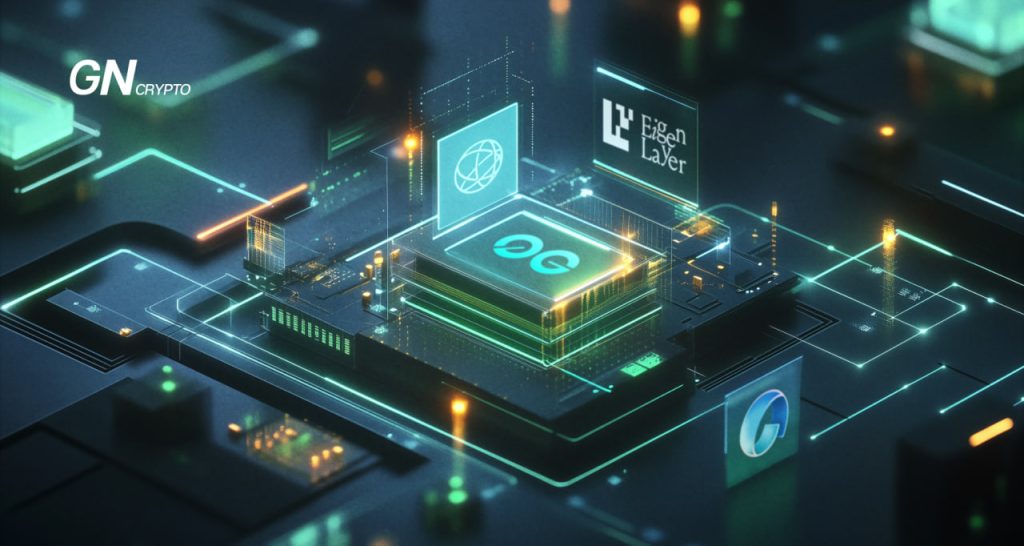Top Web3 Data Availability Networks in 2024

Blockchain functionality greatly depends on how participants access data about the requests, network state and other details to verify transactions. Since data needs to be shared across all nodes, delays in propagation can impact network capacity and slow down transactions. To prevent this, data availability (DA) networks offer a solution.
On this page
- The Need for Data Availability Solutions
- 4 Leading Data Availability Networks in 2024
- Traditional blockchains often have integrated solutions for optimized data transmission, such as sharding, but they continue to face issues related to cost and transaction speed. Data availability networks offer a different approach. Typically, DA layers are modular, meaning they are designed to handle various types of data, including transaction details and off-chain operations, to improve scalability. Each data availability network employs its own techniques and solutions to achieve this.
- 1. Celestia
- 2. Eigen Layer
- 3. Avail
The Need for Data Availability Solutions
For a blockchain transaction to take place, it is necessary for the network participants to approve that it’s valid. When a user sends a request to a blockchain, it is first broadcasted to a few nodes, which check if everything is valid and then move the request to neighboring nodes until the message is shared across all participants.
This process can vary depending on the blockchain. For example, some networks may have centralized nodes that receive transactions first, while in others, transaction broadcasting might depend on factors such as nodes' network speed, geographical location, and other variables.
Block producers gather transactions into a block, after which the network reaches consensus to agree on the validity and order of transactions in the block.
Transaction Propagation Through Bitcoin: Source: Global X | Bitcoin The Basic
The exchange of messages between nodes requires computational resources from the network. During high traffic and large requests, ensuring data availability becomes more challenging. Meanwhile, besides handling data availability, the network needs to process transaction execution and settlement.
In blockchains with a single layer handling all operations, like Ethereum, scalability and resource management can be challenging. To increase blockchain capacity, Layer 2 and Layer 3 solutions offload some computation from the mainnet. However, there’s still a need to guarantee the data flow between the layers and nodes, which data availability networks take care of.
4 Leading Data Availability Networks in 2024
Traditional blockchains often have integrated solutions for optimized data transmission, such as sharding, but they continue to face issues related to cost and transaction speed. Data availability networks offer a different approach. Typically, DA layers are modular, meaning they are designed to handle various types of data, including transaction details and off-chain operations, to improve scalability. Each data availability network employs its own techniques and solutions to achieve this.
1. Celestia
Celestia Network on X. Source: x.com
Originally called LazyLedger, Celestia is a modular blockchain optimized for ordering and guaranteeing data availability. The project was founded in 2019 by Mustafa Al-Bassam, Ismail Khoffi, and John Adler. In 2021, LazyLedger was rebranded as Celestia, and in October 2023, it went live on the mainnet. Celestia enables developers to launch customizable and scalable blockchains through a technology called Data Availability Sampling (DAS). This solution simplifies the data verification process by relying on light nodes that download only a portion of each block rather than all data. Celestia has a native token, TIA, which is used for payments and governance.
2. Eigen Layer
Eigen Layer on X. Source.x.com
Eigen is a Layer 2 data availability infrastructure that provides off-chain data processing for the Ethereum network. It was founded in early 2021 by Sreeram Kannan, the director of the University of Washington's Blockchain Lab, and went live on the mainnet in April 2024. Built on Ethereum, Eigen delivers high security without the need for separate validator nodes, while also simplifying data management and reducing costs. The Eigen Network has a native token, EIGEN, which can be used for staking, payments, and other operations. Developers can build Actively Validated Services (AVS) on the layer, launch their tokens, and restake ETH to secure multiple AVSs and delegate tokens to operators to run nodes.
3. Avail
Avail on X. Source: x.com
The Avail data availability layer began as a part of Polygon in 2020 and became a separate entity in 2023. Founders of the platform are former Polygon co-founder Anurag Arjun and research lead Prabal Banerjee. In July 2024, Avail DA and its native AVAIL token went live on the mainnet, offering a scalable layer for blockchain application development that scales on demand. Besides the Avail DA, the network has two other components: Avail Nexus for cross-chain transactions and Avail Fusion Security to provide comprehensive shared security.
4. 0G (Zero Gravity)
0G Labs on X. Source: x.com
Zero Gravity or 0G for short, went live on the testnet in April, 2024 and is expected to launch on the mainnet by the third quarter of the year. Its founders are serial entrepreneurs Michael Heinrich, Ming Wu, Fan Long, and Thomas Yao. The 0G network provides a scalable data layer for decentralized apps, mainly focusing on AI and its on-chain functionality. 0G’s data availability layer is built on a general-purpose storage layer, aiming to provide infinitely scalable infrastructure by optimizing data availability and storage.
The content on The Coinomist is for informational purposes only and should not be interpreted as financial advice. While we strive to provide accurate and up-to-date information, we do not guarantee the accuracy, completeness, or reliability of any content. Neither we accept liability for any errors or omissions in the information provided or for any financial losses incurred as a result of relying on this information. Actions based on this content are at your own risk. Always do your own research and consult a professional. See our Terms, Privacy Policy, and Disclaimers for more details.




























